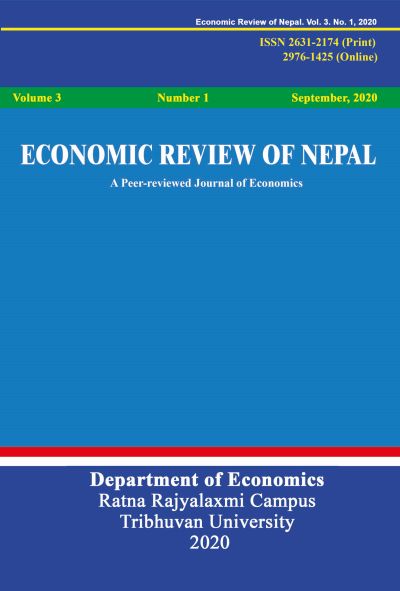Government Debt Approach on Growth
DOI:
https://doi.org/10.3126/ern.v3i1.61741Keywords:
domestic loan, foreign loan, debt burden, nominal GDP, gross fixed capital formationAbstract
This study aims to analyze the short-run and long-run relationship of nominal GDP (a dependent variable) with the four independent variables, such as domestic loans (dl), foreign loans (fl), export (exp), and gross fixed capital formation (gfcf). Both descriptive and inferential tools were used in this study: the five years of time series data from FY 2015 to FY 2020 under the descriptive design to examine the trends of these five study variables, and the 46 years of data from FY 1975 to FY 2020 and a multiple regression model under the inferential design to measure their relationship. Based on the objective and method, the study found the Nepali economy to be buckling under the weight of a growing and chronic public debt burden since the start of its budgetary process. Therefore, it behooves the government of Nepal to steer its economy towards positive growth in the future by mitigating the adverse effects of the debt burden.
Downloads
Downloads
Published
How to Cite
Issue
Section
License
This license enables reusers to distribute, remix, adapt, and build upon the material in any medium or format for noncommercial purposes only, and only so long as attribution is given to the creator.




